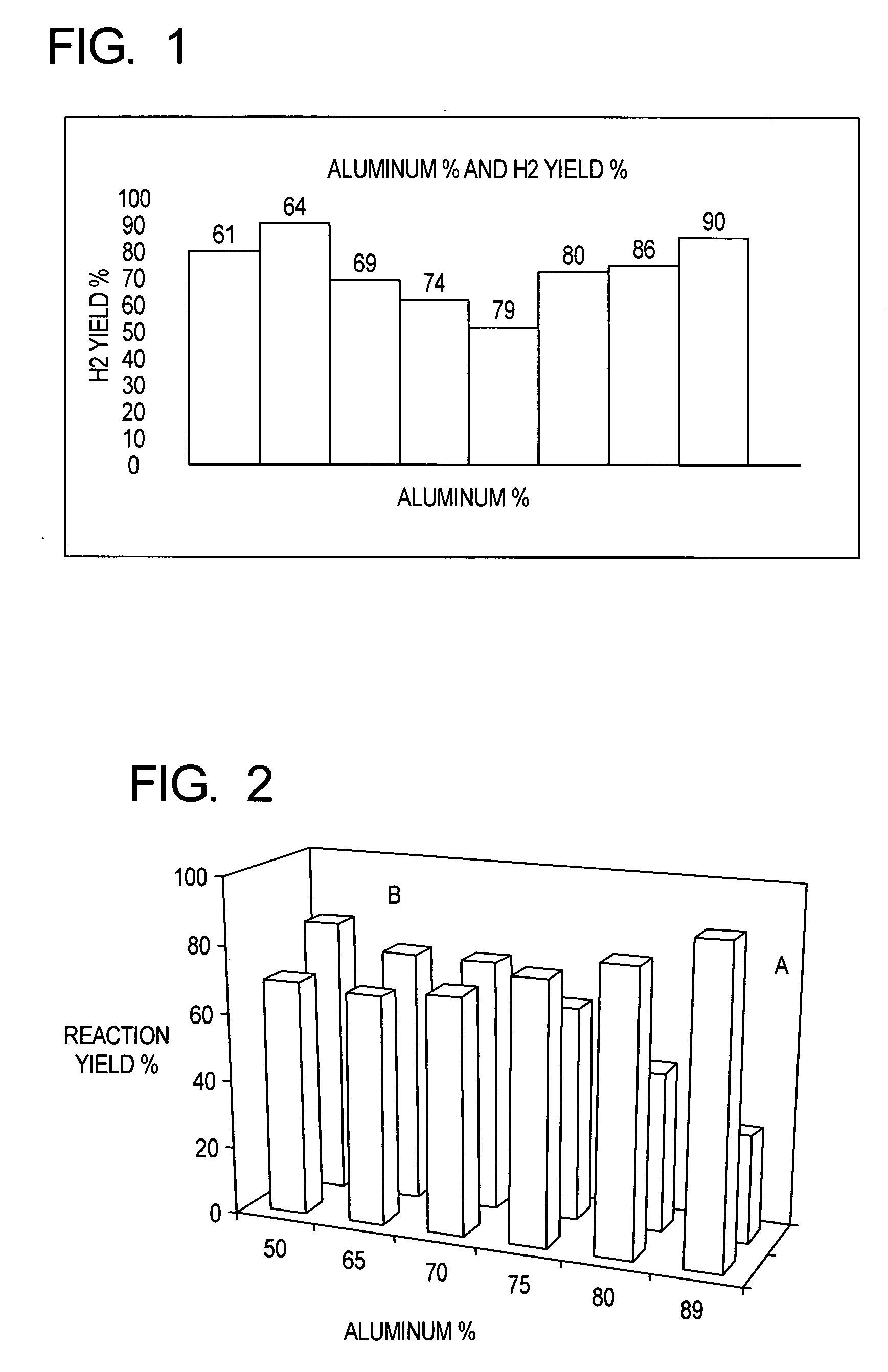Production of hydrogen from aluminum and water
a technology of aluminum and water, applied in the field of hydrogen production, can solve the problems of unsuitable combustion-based systems for many products, unfavorable environmental protection, and low efficiency, and achieve the effect of hydrolyzing water and being easy to recycl
- Summary
- Abstract
- Description
- Claims
- Application Information
AI Technical Summary
Benefits of technology
Problems solved by technology
Method used
Image
Examples
Embodiment Construction
[0030]a. Overview
[0031]The present invention provides a method and composition that produces hydrogen using an aluminum-based water-split reaction, in which passivation is prevented but without requiring mechanical alloying of the aluminum with another material; only a blending of powdered materials is needed. The cost is therefore greatly reduced by comparison with prior approaches, and the overall weight energy density of the material is also increased.
[0032]The composition is a particulate mixture of metallic aluminum, a water soluble salt catalyst, and a metal oxide initiator. Magnesium and zinc may also be used in the reaction and may be present with the aluminum, but are unattractive in terms of cost, performance and environmental impact. The metallic aluminum is in the form of distinct particles discrete from those of the catalyst and the imitator, without requiring mechanical alloying of the materials. The material is reacted with water to generate hydrogen at ambient temper...
PUM
| Property | Measurement | Unit |
|---|---|---|
| size | aaaaa | aaaaa |
| size | aaaaa | aaaaa |
| pressures | aaaaa | aaaaa |
Abstract
Description
Claims
Application Information
 Login to View More
Login to View More - R&D
- Intellectual Property
- Life Sciences
- Materials
- Tech Scout
- Unparalleled Data Quality
- Higher Quality Content
- 60% Fewer Hallucinations
Browse by: Latest US Patents, China's latest patents, Technical Efficacy Thesaurus, Application Domain, Technology Topic, Popular Technical Reports.
© 2025 PatSnap. All rights reserved.Legal|Privacy policy|Modern Slavery Act Transparency Statement|Sitemap|About US| Contact US: help@patsnap.com

